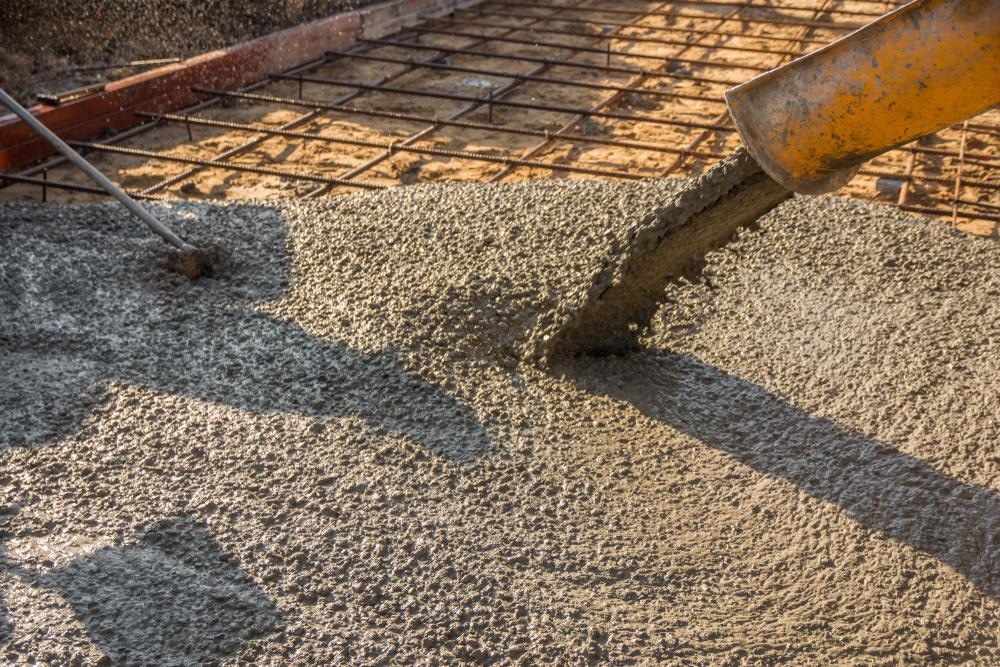
Image Credit: Nopphinan/Shutterstock.com
Here we discuss a new approach to concrete surface morphology and explore the fundamental definitions of concrete surface metrology. In an article recently published in the journal Measurement, a team of scientists from institutions in Poland and France put forward a new paradigm of concrete surface morphology, along with fundamental dimensional scales of concrete morphology. The authors also discuss the definitions of concrete surface metrology. Below is a review of their findings.
Concrete Surface Morphology and Fundamental Scales
Concrete’s composition underpins its morphology. Concrete is a material defined as being heterogeneous, multi-scale, and multi-phasic with high mobility. At ambient temperatures, concrete is a fast phase-transitional material with exothermic thermodynamics.
Four fundamental scales of concrete morphology have previously been determined. The macro-scale measures ranges of over 1 m and mainly studies coarse aggregates dispersed in a cement paste. The mesoscale ranges from 1 mm to 1 m and applies to measurements of sand and coarse aggregate with a defined shape dispersed in a paste. The macro-scale ranges from 1 μm to 1 mm and measures the same as the mesoscale in addition to cement particles. The fourth scale, the nanoscale, ranges between 1 nm and 1 μm. The nanoscale of concrete morphology applies to separated particles of molecular size.
Recent years have seen an increasing need for investigated structures at smaller scales. New technologies are using fine powders and nanoparticles in various applications, including construction and concrete, making smaller scales of concrete morphology increasingly important.
The morphology of concrete can be defined as internal (spatial), external (superficial), and as interfaces and interphases. Internal morphology relies on the characterization of microstructural types or the definition of the form of various heterogeneities, such as the degree of anisotropy, number of phases, and density of boundaries. The technique of external morphology defines the border, frontier, and limits of the concrete material.
Finally, interfaces and interphases can also be used to determine concrete’s morphology. The relationship between the three phasic dynamic interfaces involved in the solidification process (solid/liquid, gas/liquid and gas/solid phases) are investigated.
Fundamental Definitions of Concrete Surface Metrology
In their paper, the team, led by scientists at the Wroclaw University of Science and Technology, explains that methods of measuring the surface morphology of concrete can be categorized as either tactile (contact) or non-contact methods.
Tactile methods were initially developed in the mechanical engineering field and, until recently, these methods dominated engineering activities. Therefore, data collection and the parametric methodology of all metrological methods of surface morphology have their roots in contact methodology.
Employing the tactile method, scientists use a profilometer equipped with a stylus that moves laterally over a sample. The stylus registers changes in the sample's surface as its position changes in relation to other elements of the stylus. Most often, a diamond stylus is used and equipped with transducers of a wide variety, including induction, interference, piezo-electric, and photo-optical.
The benefit of the tactile method is its simplicity and ease of obtaining a profile measurement. The equipment used is also accessible to labs worldwide.
Non-contact methods, on the other hand, involve a more complex methodology. Light microscopy introduces a source of light through a narrow gap to a sample at an angle of usually 45 degrees. Surface morphology is then determined using the principles of geometrical optics. The advantage of this non-contact method is that there is no requirement to touch or disturb the surface. Drawbacks of the method include the requirement to collect and transport samples as the apparatus cannot be used to conduct in-situ analyses.
Conclusion
The metrology of concrete surface morphology is considered a highly complex and arduous undertaking. Sadowski et al. (2020) suggest that establishing a deeper knowledge of the fundamental definitions of concrete surface morphology is vital to aid this task. In addition, Sadowski et al. also highlight the importance of selecting the appropriate method of characterizing concrete surface morphology.
Overall, the paper presents a thorough review of the current approaches to the metrology of concrete surface morphology and provides scientists with a deeper understanding of how the field is advancing.
The research will be invaluable to the construction industry’s progression, as well as the various sectors that rely on concrete. With better methodologies for exploring surface concrete morphology, the industry will benefit from stronger structures and a deeper understanding of the material it works with. Further to this, their work will likely inform the progression of methodologies used to measure surface morphologies of other materials.
References and Further Reading
Sadowski, Ł. and Mathia, T., 2016. Multi-scale metrology of concrete surface morphology: Fundamentals and specificity. Construction and Building Materials, 113, pp.613-621. https://www.sciencedirect.com/science/article/abs/pii/S095006181630397X
Sadowski, Ł., Hoła, J., Czarnecki, L. and Mathia, T., 2021. New paradigm in the metrology of concrete surface morphology: Methods, parameters and applications. Measurement, 169, p.108497. https://www.sciencedirect.com/science/article/abs/pii/S0263224120310253
Sahu, S., Badger, S., Thaulow, N. and Lee, R., 2004. Determination of water–cement ratio of hardened concrete by scanning electron microscopy. Cement and Concrete Composites, 26(8), pp.987-992. https://www.sciencedirect.com/science/article/abs/pii/S0958946504000496
Disclaimer: The views expressed here are those of the author expressed in their private capacity and do not necessarily represent the views of AZoM.com Limited T/A AZoNetwork the owner and operator of this website. This disclaimer forms part of the Terms and conditions of use of this website.